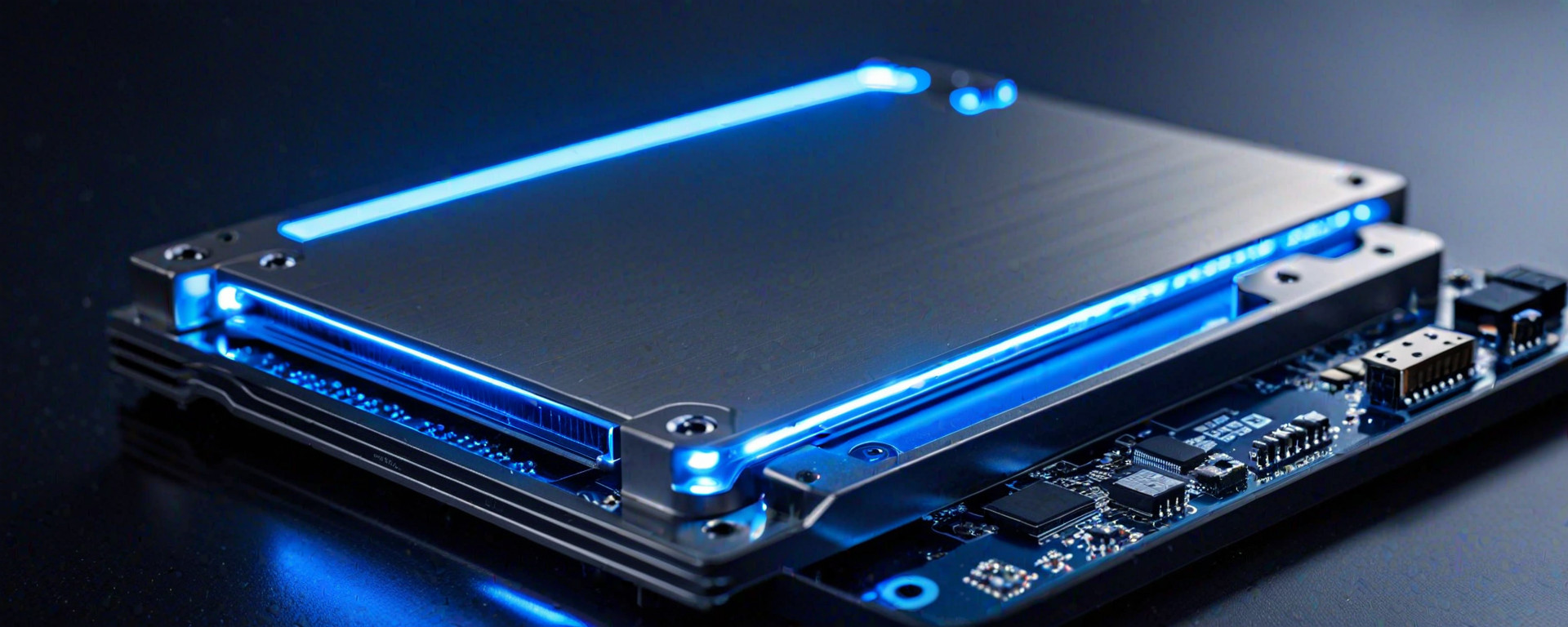Introduction
The concept of storage latency might not be as widely discussed as data transfer rates or read/write speeds, but its impact on system performance is profound. Latency refers to the delay experienced when a computer requests information from storage and waits for that request to be fulfilled. This delay can significantly affect how quickly your system boots up and how promptly applications load.
Understanding storage latency is crucial because it goes beyond just measuring speed; it also captures the responsiveness of your entire computing experience. For users who rely on quick access to their files, especially in business or gaming environments where every second counts, managing latency can mean the difference between a sluggish system and one that feels snappy and responsive.
In this article, we will delve into the nuances of storage latency, its impact on boot times and application load times, and explore strategies for mitigating these delays. We'll cover everything from defining what latency is to providing real-world examples and detailed comparisons between different types of storage solutions. By the end, you should have a comprehensive understanding of how to optimize your system's performance by reducing storage latency.
Understanding Storage Latency
Definition: Latency in the context of computer storage refers to the time it takes for data to travel from a storage device to the CPU or vice versa. This delay can arise due to various factors such as mechanical delays, queue depths, and interface limitations.
Literally, latency is the time elapsed between issuing a command and receiving the response. In computer hardware, this is often measured in milliseconds (ms) and can significantly impact system performance when dealing with high-speed data transfers.
Mechanical Delays
- Rotational Latency: This applies to hard disk drives (HDDs), which rely on spinning platters to access data. The time it takes for the correct sector of the disk to rotate into place under the read/write head is called rotational latency.
- Seek Time: Also relevant in HDDs, seek time refers to the movement of the actuator arm that positions the read/write heads over the appropriate track on a platter. This delay can vary depending on how far the arm needs to move.
Queue Depths and Interface Limitations
- Queue Depth: The number of I/O requests a storage device can process simultaneously before they start queuing up, causing delays. Higher queue depths allow for better performance in environments with heavy data loads.
- Interface Speeds: Storage devices communicate over various interfaces like SATA, NVMe, and SAS. Faster interfaces like NVMe allow for quicker command processing and lower latency compared to older standards like SATA.
Mechanical vs. Solid-State Drives (SSDs)
The differences between HDDs and SSDs in terms of mechanical delays are stark. While HDDs rely on moving parts, SSDs use flash memory chips which eliminate rotational latency and seek time entirely. This results in significantly faster access times for data stored on SSDs.
Performance Metrics
- IOPS (Input/Output Operations Per Second): A measure of how many read/write operations a storage device can handle per second, reflecting its ability to process I/O requests efficiently. SSDs generally have much higher IOPS than HDDs due to lower latency.
- Latency: As mentioned earlier, this is the time delay between issuing a command and receiving data from or writing data to storage devices. SSDs offer substantially lower latencies compared to HDDs because they lack mechanical delays.
Impact on Boot Times and Application Load Times
The impact of latency on boot times can be significant, especially with older HDD-based systems. During the boot process, numerous files need to be accessed from storage; higher latency means longer wait times for these operations. SSDs reduce this delay dramatically.
Application Loading
- Gaming: In gaming, fast loading times can mean quicker access to game levels and menus. This is particularly noticeable with large open-world games that require frequent data requests from storage devices.
- Business Applications: For business environments where productivity software needs quick responses, SSDs help in reducing delays during application launches and file operations, thereby enhancing overall work efficiency.
Strategies for Reducing Storage Latency
To minimize latency, several strategies can be employed depending on the specific use case:
Selecting Appropriate Hardware
- NVMe SSDs: For maximum performance, NVMe SSDs offer the fastest data transfer rates and lowest latencies.
- Rapid Storage Technologies: Intel's Optane Memory can be paired with traditional HDDs to speed up boot times and application loading by caching frequently accessed files.
Tuning Queue Depths
Adjusting the queue depths of storage devices through settings like Windows' Storage Spaces or third-party software can help optimize how many I/O operations are handled concurrently, reducing waiting time for data requests.
Detailed Comparisons with Alternative Products
Below is a comparison table highlighting some key SSD models available in the market:
| Model | Type | IOPS (Read/Write) | Latency (µs) | Capacity | Interface | Price ($USD) |
|---|---|---|---|---|---|---|
| Samsung 970 EVO Plus | NVMe SSD | 3,400/2,500 | <10 | 1TB | M.2 NVMe | 89.99 |
| Adata XPG SX8200 Pro | NVMe SSD | 3,500/3,100 | <10 | 1TB | M.2 NVMe | 84.99 |
| Crucial P5 | NVMe SSD | 3,600/3,100 | <10 | 1TB | M.2 NVMe | 89.99 |
Conclusion
Leveraging fast storage devices like NVMe SSDs is crucial for minimizing latency and enhancing system performance, especially in demanding environments such as gaming or business productivity.
Future Trends
- Beyond NVMe: New standards are being developed to further reduce latency and increase throughput, ensuring continued improvement in storage technology.
- Data Compression and Deduplication: Techniques aimed at reducing the amount of data stored can help in lowering I/O overheads and improving overall performance.
By adopting these strategies and staying informed about advancements in storage technology, users can significantly enhance their system's responsiveness and efficiency. This is particularly crucial as workloads become more demanding with increasing reliance on data-intensive applications. For further reading and detailed specifications of specific models, refer to the following resources: - Samsung 970 EVO Plus - Adata XPG SX8200 Pro - Crucial P5 SSDs These links provide comprehensive data sheets and user reviews that can aid in making informed decisions regarding storage solutions.








